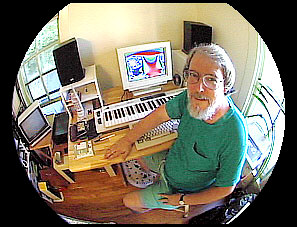|
|



The R&L Nikkor Tables combine two subjective evaluations of mostly classical Nikon lenses by David Ruether and Grover Larkins. The synthesis tables are published by the kind permission of the original main authors, and include David's invaluable comments on individual lenses. Click the links above for the various sections of the R&L Nikkor tables. The ratings are explained below. It is important to keep in mind that photography is about pictures - not equipment, as we try to illustrate in our Nikonpics Gallery. However, this is what David Ruether wrote on the subject: "Poor lenses can be used to make fine photographs, but how much more fun is it to use good lenses and not need to find ways around their shortcomings". Enjoy your visit! Leo Verwoerd |
Home |
David Ruether |
Photographer David Ruether does architectural, college-catalogue, portrait, publicity, stock, aerial, and wedding photography - anything on-location. His career had a few halting beginnings, starting with using an Argus 75 snapshooter, a little B&W processing in high school, followed by experimenting with a little slide shooting while in architecture schools, and an attempt to document a US cross-country trip. A bit of architectural and other types of photography followed, and he soon gave up architecture for photography. |
David Ruether's and Grover Larkins' Subjective Lens Evaluations |
Before long, he had shown work in many museums, and a couple of magazine articles were published on his photography. A few museums bought prints, and one published a small book of his photographs. He taught photography part time at an upstate NY women's college, and also was a commercial photographer (which he calls: "a self-unemployed member of the leisure-poor class"). He gave it all up for several years while exploring audio interests, but then returned to photography about a dozen years ago. David Ruether's website can be found at www.donferrario.com/ruether. Grover Larkins on lenses "I'm getting quite a few questions pertaining to long lenses and nature photography glass in particular (...) Here are some lens rankings based upon personal experiences of several closely allied Pro Photographers". Dr. Larkins' website can be found at www.fiu.edu/~larkinsg/nature_gallery_index.htm |
Rating by Grover Larkins is Optical/Mechanical, each on a scale of 0-5. A rating of above 4 is considered to be "Pro Quality". GL's Optical Ratings 5 = Super -- Sharp at All Apertures until Diffraction Limit sets in with Outstanding Contrast and Flare Resistance. 4 = Very Good -- Center 75% of the Image is Sharp Wide Open and by 2 stops down entire image is crisp with very good contrast and flare resistance at all apertures. 3 = Good -- May have to be stopped down more than 2 stops to get the entire image sharp and contrast could be better, but is still OK. Flare resistance is not as good as it could be. This is a lens you need to be cautious using a teleconverter with. 2 = So-So -- Portraits and Family Photos. Contrast is acceptable but not nearly as good as a 3 or 4 rated lens. Don't even think of using a teleconverter. May have one good aperture for sharpness and contrast but in general a lens strictly for amateur use. 1 = Dog -- Only slightly better than an Instamatic Lens. 0 = Awful -- a lens polished using sandpaper or bubble gum. GL's Mechanical Ratings 5= Pro Quality in every respect 4= Better than Average Amateur Quality (AAQ) 3= AAQ 2= Below AAQ 1= Will break in normal use 0= Manufactured broken. Rating by David Ruether may be compared with GL's marks for optical performance; he deals with some mechanical aspects in his notes on particular lenses. Although his scale runs from 0-7, DR explains that the marks 0, 1, 6, and 7 are in fact not used. DR's Optical Ratings 7 = Absolutely Perfect lens in every respect 6 = Near Perfect lens with hard to detect shortcomings 5 = Excellent Image Quality, with minor limitations 4 = Very Good to excellent image quality at most apertures, a fully professional-level lens with some limitations 3 = Fair image quality, perhaps very good at one or two apertures 2 = Low image quality, usable for snapshots 1 = Very Poor image quality, a "pop bottle bottom" 0 = Unable to Form an Image |
The Ratings Explained |
THE R&L NIKKOR TABLES |